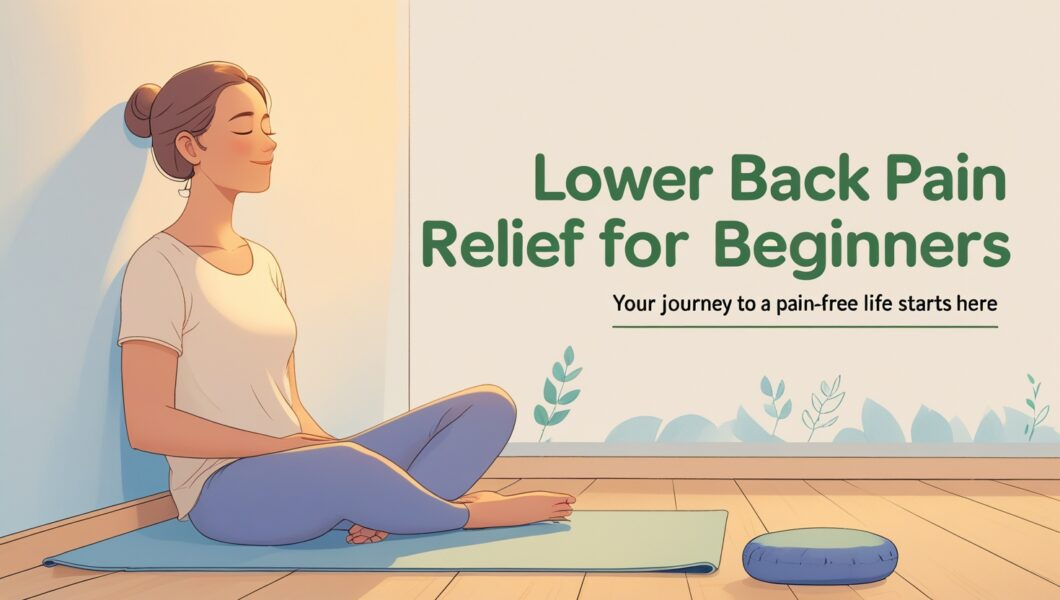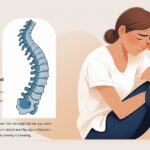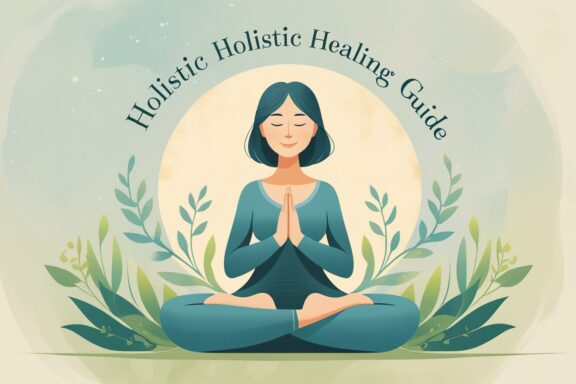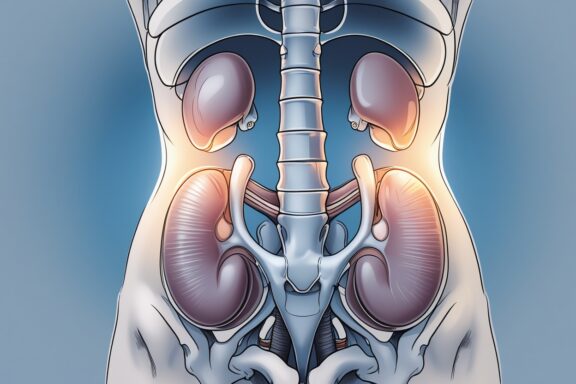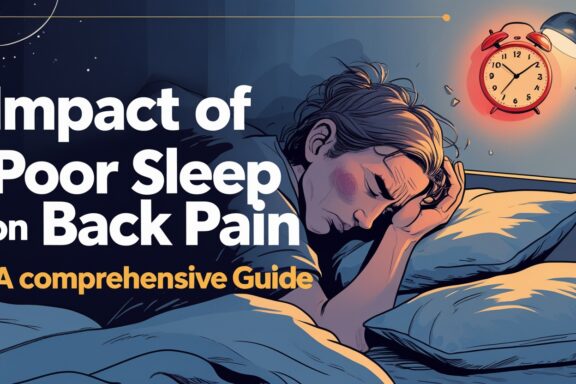Are you tired of that nagging ache in your lower back? You're not alone! Millions of people worldwide struggle with lower back pain, but here's the good news – relief is within reach. This comprehensive guide will walk you through proven, beginner-friendly methods to tackle your back pain head-on.
Ouch! That familiar twinge in your lower back strikes again. Whether you're bending over to pick up groceries or simply getting out of bed, lower back pain can turn everyday activities into a real challenge. But hey, don't throw in the towel just yet!
Lower back pain affects approximately 80% of adults at some point in their lives, making it one of the most common health complaints globally. The good news? Most cases of lower back pain are mechanical in nature, meaning they're related to how you move, sit, or use your body – and that's something you can definitely work with!
Understanding Your Lower Back: The Foundation of Relief
Before diving into solutions, let's get acquainted with what's actually happening down there. Your lower back, or lumbar spine, consists of five vertebrae (L1-L5) that bear the weight of your upper body. It's a complex system of bones, muscles, ligaments, and discs working together like a well-oiled machine – when everything's functioning properly, that is.
Think of your spine as the central pillar of a building. When one part gets out of alignment, the whole structure feels the strain. Common culprits behind lower back pain include muscle strains, herniated discs, poor posture, and yes, even stress. According to the American Physical Therapy Association, mechanical back pain accounts for about 97% of all back pain cases, which is actually fantastic news because it means you've got the power to influence your recovery!
Simple Stretching Exercises: Your Daily Dose of Relief
The Cat-Cow Stretch: A Classic for Good Reason
Start on your hands and knees – think tabletop position. Slowly arch your back while lifting your head and tailbone toward the ceiling (that's the cow). Then, round your spine toward the ceiling while tucking your chin to your chest (hello, cat!).
This gentle movement helps mobilize your spine and can provide immediate relief. Perform 10-15 repetitions, moving slowly and focusing on the stretch. It's like giving your spine a gentle wake-up call!
Child's Pose: The Ultimate Reset Button
Kneel on the floor, touch your big toes together, and sit back on your heels. Then, open your knees about hip-width apart and fold forward, extending your arms in front of you. Rest your forehead on the ground and breathe deeply.
This pose stretches your lower back, hips, and thighs while promoting relaxation. Hold for 30 seconds to 2 minutes – whatever feels good. It's basically a hug for your back!
The Knee-to-Chest Stretch: Simple Yet Effective
Lie on your back with both knees bent and feet flat on the floor. Gently pull one knee toward your chest, holding the back of your thigh. Hold for 15-30 seconds, then switch legs.
This stretch helps release tension in your lower back and can be particularly helpful first thing in the morning or before bed. Plus, it's so simple you can do it while watching TV!
Strengthening Exercises: Building Your Back's Support System
Core Strengthening: The Unsung Hero
Here's the thing – your core isn't just about getting six-pack abs (though that's a nice bonus!). A strong core acts like a natural corset, supporting your spine and reducing the load on your lower back.
Start with basic planks, holding for 20-30 seconds and gradually increasing the duration. Dead bugs are another excellent option: lie on your back, lift your arms and legs to 90 degrees, then slowly extend opposite arm and leg while keeping your core engaged. These exercises might seem simple, but they're incredibly effective at building the stability your back craves.
Glute Bridges: Wake Up Those Sleeping Muscles
Weak glutes often contribute to lower back pain because other muscles have to compensate. Lie on your back with knees bent, feet flat on the floor. Squeeze your glutes and lift your hips, creating a straight line from knees to shoulders.
Hold for 2-3 seconds, then lower slowly. Start with 10-15 repetitions and gradually increase. Your glutes might be asleep on the job, but this exercise will definitely wake them up!
Posture Matters: The Silent Pain Reliever
Sitting Smart: Your Desk Setup Game-Changer
Let's be honest – most of us spend way too much time hunched over computers. Poor posture puts tremendous stress on your lower back, creating a recipe for pain.
Adjust your chair so your feet are flat on the floor and your knees are at about 90 degrees. Your computer screen should be at eye level to prevent neck strain that can contribute to back pain. Consider using a lumbar support cushion or rolled-up towel to maintain your spine's natural curve.
Standing and Walking: Movement is Medicine
When standing, distribute your weight evenly on both feet and avoid locking your knees. If you must stand for long periods, try placing one foot on a small stool or step and alternate feet every 10-15 minutes.
Walking is one of the best activities for lower back pain relief. It's low-impact, improves circulation, and helps maintain flexibility. Start with short walks and gradually increase duration as your pain decreases.
Natural Remedies: Mother Nature's Pain Relief Arsenal
Heat and Cold Therapy: The Dynamic Duo
Ice and heat can be your best friends when dealing with lower back pain, but timing matters! For acute pain or recent injuries, ice is your go-to for the first 48-72 hours. Apply for 15-20 minutes at a time, several times a day.
After the initial inflammation subsides, heat therapy can help relax muscles and improve blood flow. Try a warm bath, heating pad, or hot water bottle. The Mayo Clinic recommends alternating between heat and cold for chronic pain management.
Anti-Inflammatory Foods: Eating Your Way to Relief
What you eat can actually influence your pain levels! Foods rich in omega-3 fatty acids, like salmon and walnuts, have natural anti-inflammatory properties. Turmeric, ginger, and tart cherries are also fantastic additions to your pain-fighting diet.
On the flip side, try to limit processed foods, excessive sugar, and trans fats, which can promote inflammation. Think of your diet as fuel for healing – choose premium!
Lifestyle Modifications: Small Changes, Big Impact
Sleep Position: Your Nighttime Healing Strategy
How you sleep can make or break your back pain recovery. If you're a side sleeper, place a pillow between your knees to maintain proper spinal alignment. Back sleepers should consider a pillow under their knees to reduce pressure on the lower back.
Your mattress matters too! A medium-firm mattress typically provides the best support for most people with lower back pain. If your mattress is too soft or too old, it might be time for an upgrade.
Stress Management: The Mind-Body Connection
Believe it or not, stress can literally be a pain in the back! Chronic stress causes muscle tension and can exacerbate pain. Incorporate stress-reduction techniques like deep breathing, meditation, or yoga into your daily routine.
Even just 10 minutes of mindfulness practice can make a difference. Your back will thank you for giving your nervous system a break!
When to Seek Professional Help
While most lower back pain resolves on its own, certain red flags warrant immediate medical attention:
- Pain following a significant injury or trauma
- Numbness or tingling in your legs
- Weakness in your legs or feet
- Loss of bladder or bowel control
- Fever accompanying back pain
- Severe pain that doesn't improve with rest
Don't be a hero – if your pain is severe, persistent, or accompanied by these symptoms, it's time to consult a healthcare professional. Physical therapists, chiropractors, and orthopedic specialists can provide targeted treatment plans tailored to your specific needs.
Creating Your Personal Lower Back Pain Relief Plan
Week 1-2: Foundation Building
Start with gentle stretching exercises twice daily – morning and evening work best. Focus on the cat-cow stretch, child's pose, and knee-to-chest stretches. Begin incorporating short walks (10-15 minutes) into your routine.
Pay attention to your posture throughout the day. Set reminders on your phone to check in with your body position every hour. Small adjustments can lead to significant improvements!
Week 3-4: Strengthening Phase
Add core strengthening exercises to your routine. Start with 2-3 exercises, performing them every other day. Planks, dead bugs, and glute bridges are excellent choices for beginners.
Continue with your stretching routine and gradually increase walking duration. Listen to your body – some days you'll feel great, others might require more rest.
Week 5+: Maintenance and Progress
By now, you should be developing a routine that works for you. Continue building strength and flexibility while maintaining good posture habits. Consider adding variety to keep things interesting – swimming, yoga, or tai chi can all be beneficial for lower back health.
Remember, consistency is key! Small, regular efforts trump sporadic intensive sessions every time.
Frequently Asked Questions
Q: How long does it take to see improvement in lower back pain? A: Most people experience some relief within 2-4 weeks of consistent stretching and strengthening exercises. However, everyone's timeline is different, and factors like the severity of pain, underlying causes, and consistency with treatment all play a role.
Q: Is it normal for exercises to cause some discomfort initially? A: Mild discomfort or muscle fatigue is normal when starting new exercises. However, sharp, shooting, or worsening pain is not normal and should be addressed immediately. The rule of thumb: listen to your body and stop if something doesn't feel right.
Q: Can I prevent lower back pain from recurring? A: Absolutely! Maintaining a regular exercise routine, practicing good posture, managing stress, and staying active are all excellent strategies for preventing future episodes of lower back pain.
Q: Are there any activities I should avoid with lower back pain? A: During acute pain episodes, avoid heavy lifting, high-impact activities, and exercises that involve twisting or bending at the waist. Once your pain subsides, gradually reintroduce activities while maintaining proper form.
Q: How important is weight management for lower back pain? A: Very important! Excess weight, especially around the midsection, puts additional stress on your lower back. Even a modest weight loss of 5-10 pounds can significantly reduce back pain for many people.
Final Thoughts: Your Journey to Better Back Health
Lower back pain doesn't have to be your constant companion. With patience, consistency, and the right approach, you can take control of your pain and get back to enjoying life's activities. Remember, this is a journey, not a destination – some days will be better than others, and that's perfectly normal.
The key is to start where you are, use what you have, and do what you can. Your back has been supporting you all these years; now it's time to return the favor! Small, consistent steps toward better back health will compound over time, leading to significant improvements in your quality of life.
Don't let lower back pain relief for beginners intimidate you – you've got this! Start with one or two strategies that resonate with you, and gradually build from there. Your future, pain-free self will thank you for taking action today.

